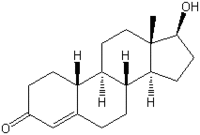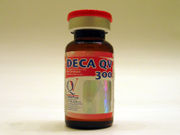For almost three years, Lance Armstrong had ignored the swelling in a testicle. He coughed up blood once and thought that if he didn't cough up more tomorrow, there was no need to worry. Whatever was wrong could wait. He was young, 25, a world-class athlete. Like them all, he believed himself bulletproof, perhaps immortal.
"I would've still been waiting if it hadn't started hurting," he told an interviewer on Feb. 7, 1997. "It just got so painful I couldn't sit on my bike any more."
The interviewer, Chris Brewer, working for a testicular cancer organization, asked, "Did you think it was bike related?"
"I didn't know," Armstrong said. "I had no idea ... maybe bike related, maybe I hit it somehow, maybe sex related! But I said, 'This is ridiculous,' and the pain just wouldn't go away."
In October 1996, Armstrong went to a hospital. There he was diagnosed with testicular cancer. Later, he was told there was cancer in his lungs. During chemotherapy, he learned there also were two malignant lesions on his brain.
"It kind of worked out better," he told Brewer, "that I got the bad news gradually. It would've been really rough for them to have said, 'You've got cancer here, here, here and here, your levels are off the board, and your chances are less than 50 percent.' I would've had a really hard time handling that."
Instead, after four rounds of chemotherapy and a six-hour surgery to remove the brain lesions, Armstrong missed only 2 1/2 months of training. Barely a month after the diagnosis of cancer, he rode leisurely in a 26-mile race alongside Eddie Merckx, a five-time Tour de France winner. Armstrong skipped one season of competition and returned to the Tour in 1998.
The forces that had made Lance Armstrong an astonishing athlete were the forces that nearly killed him and, finally, kept him alive. They were anger, arrogance, obstinance and an absolute indomitable defiance of every pain he had ever suffered, psychic and physical. All that--along with unique physiological gifts--had made him the athlete he was. They also caused him to ignore the warning signs of the most common and easily cured cancer affecting young men between the ages of 15 and 34. In the end, those forces lifted him out of the cancer ward and raised him to mythic status.
Hooray for Armstrong, the athlete. It's the cancer story that bothers me. The mythmakers say, "Look at St. Lance--how he fought cancer, how he beat cancer. You can beat cancer, too, if only you want to badly enough." My father died of lung cancer at 51. The talk of will is offensive. No one wills their way past cancer in its killing stage. To say so is to suggest that people who die of cancer are somehow deficient in tenacity, courage, spirit.
So understand this: Lance Armstrong was luckier than hell. Lucky in that he had a world-class athlete's body so strong it could survive the consequences of hubristic dawdling. Lucky in that he had the fame and wealth necessary to get the attention of the best doctors and hospitals. Lucky in that the cancer, chaotic by definition, had not metastasized beyond the reach of chemotherapy, beyond the repair of what his neurosurgeons called a simple procedure (as if any brain surgery is simple).
Then he won the Tour de France in 1999. There was open talk then of performance-enhancing drugs. Had Armstrong caused his own cancer by using drugs? Had he tested positive during the race? He denied all, and no positive test was reported, none in a decade of racing (except for one involving a topical cream that was forgiven with a medical explanation).
He has won the Tour de France seven times in a row while submitting to every drug test his sport demands with never a positive--until now. Now the French newspaper, L'Equipe, has reported that an Armstrong urine sample, taken in 1999, has been found positive for EPO, a drug that builds endurance by helping the blood deliver more oxygen to muscles.
Armstrong has filed lawsuits against most everyone who ever accused him of doping and may yet do that with the French. But on CNN's Larry King Live, he seemed content with suggesting that all of France is corrupt and engaged in a conspiracy to frame him. Why the French would trash their only great sports event, he never explained. Nor was he asked about the 90 percent of cycling's doping methods that remain undetectable--synthetic hemoglobins, growth hormones, designer Nandrolone, EPO in daily microdoses, insulin, renal receptor activators.
But give Larry King this.
He did ask if Lance was going to marry Sheryl.
Charmingly, with that big ol' Texas smile, Lance didn't answer that one, either.
dkindred@sportingnews.com
COPYRIGHT 2005 Sporting News Publishing Co.
COPYRIGHT 2005 Gale Group



